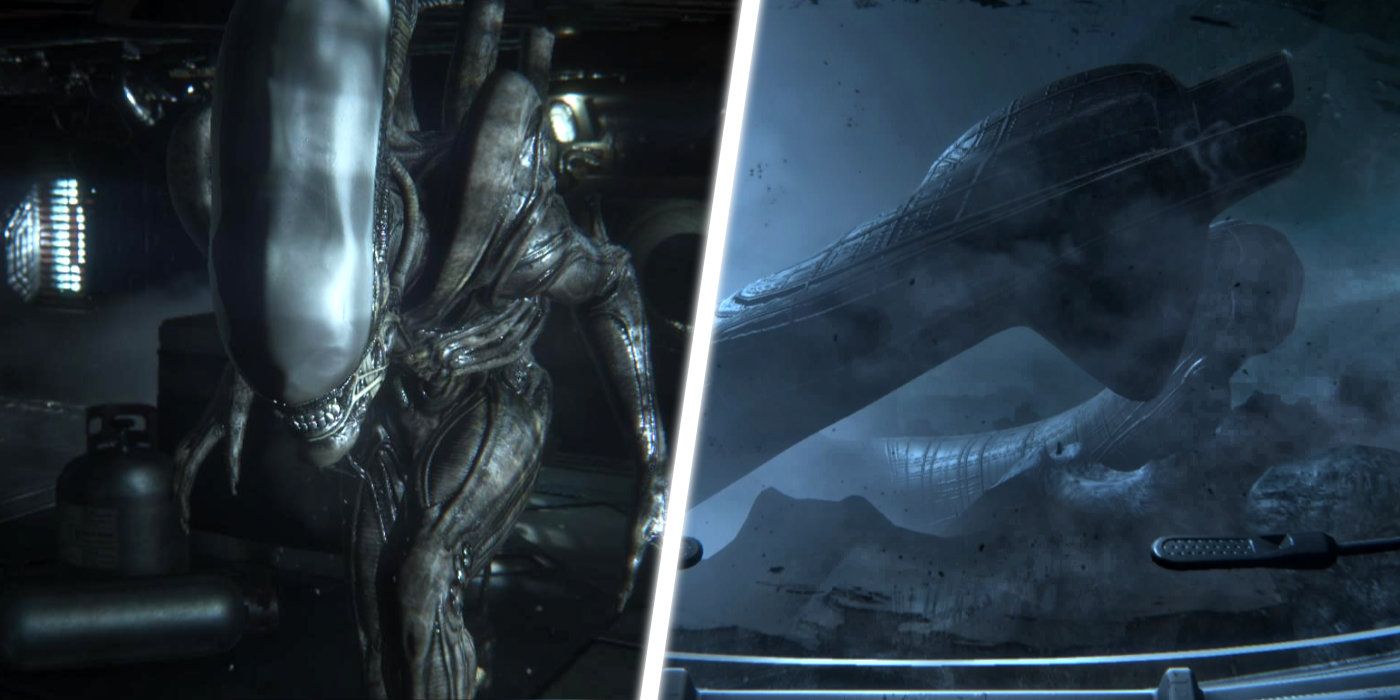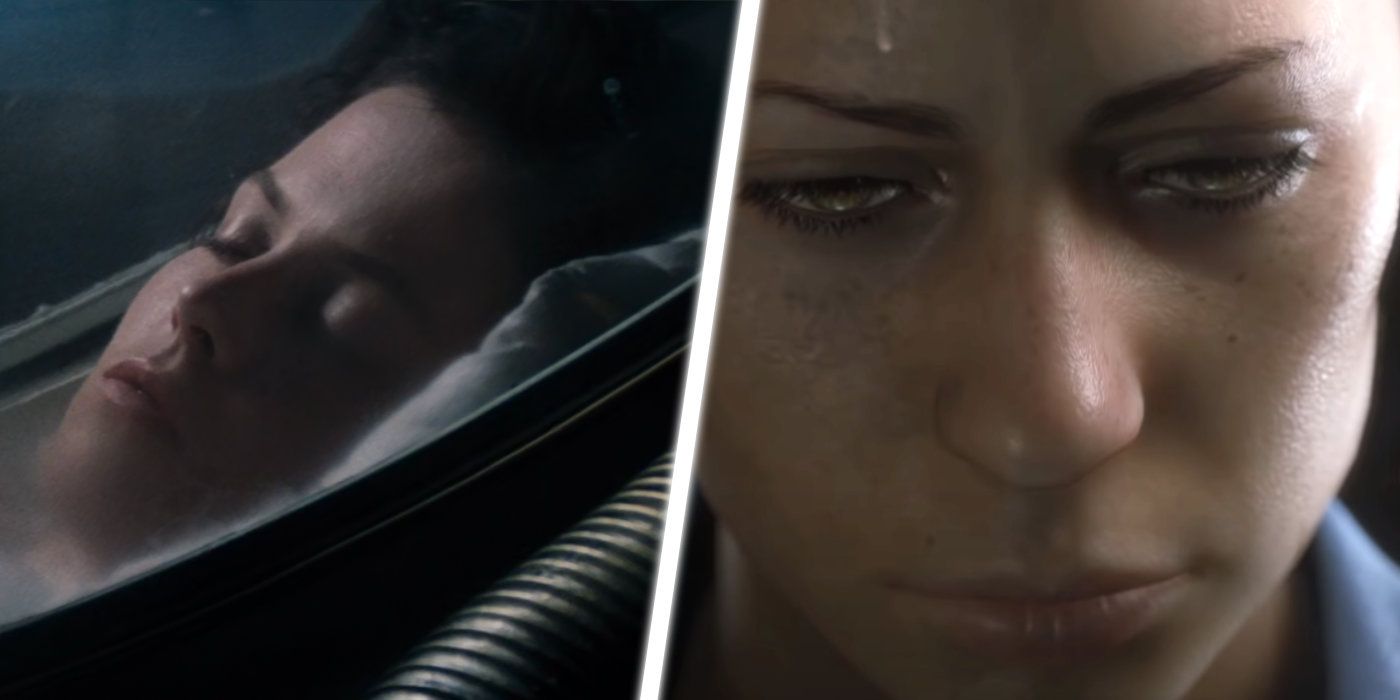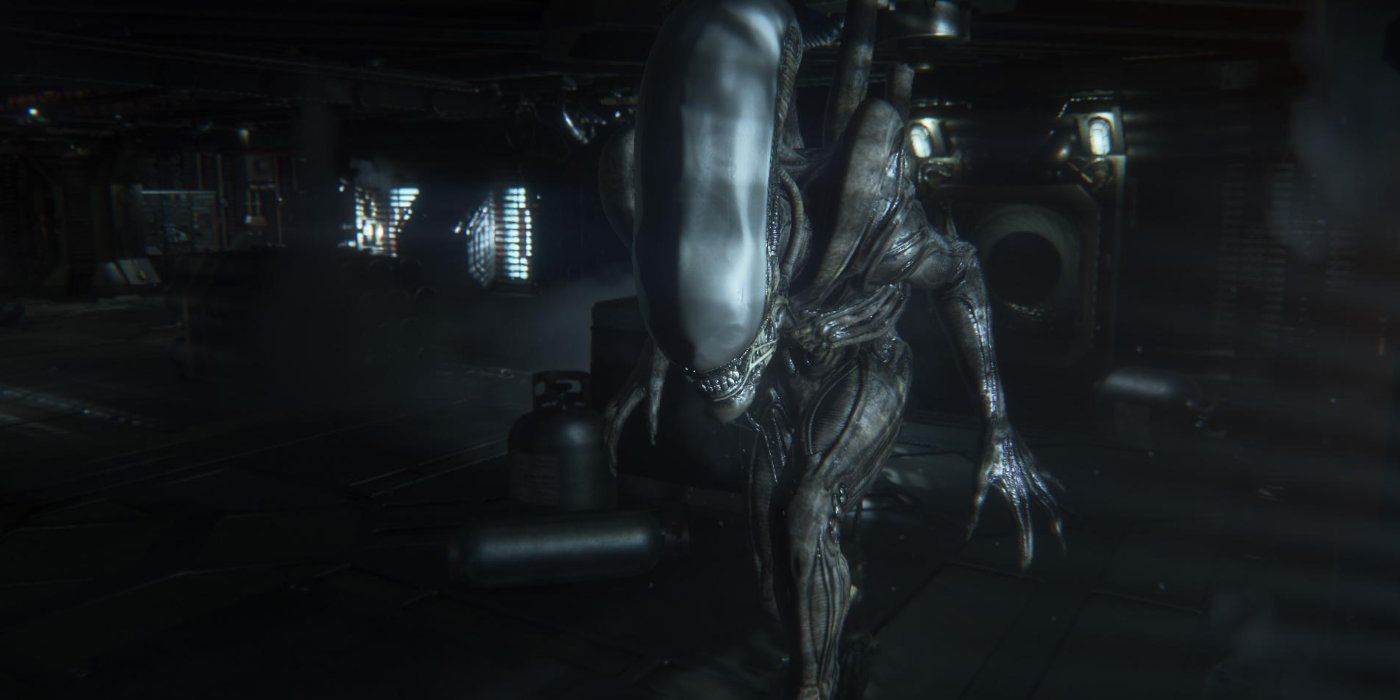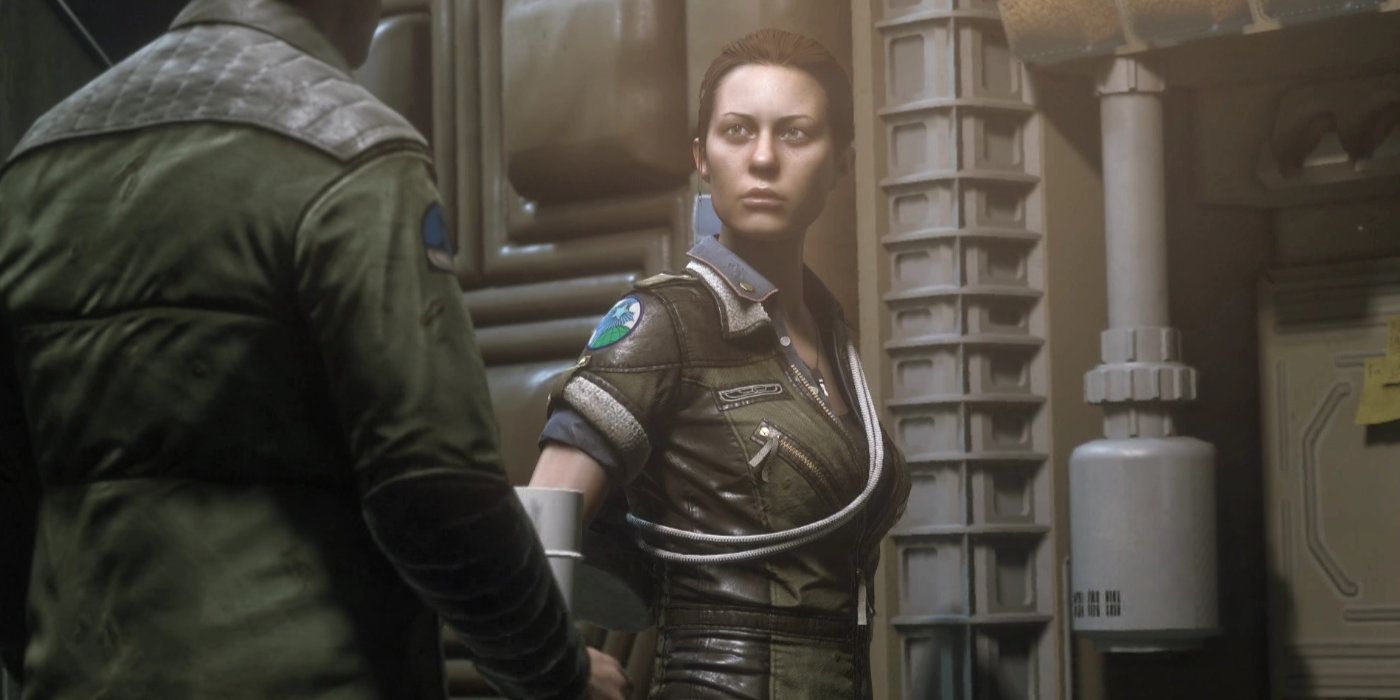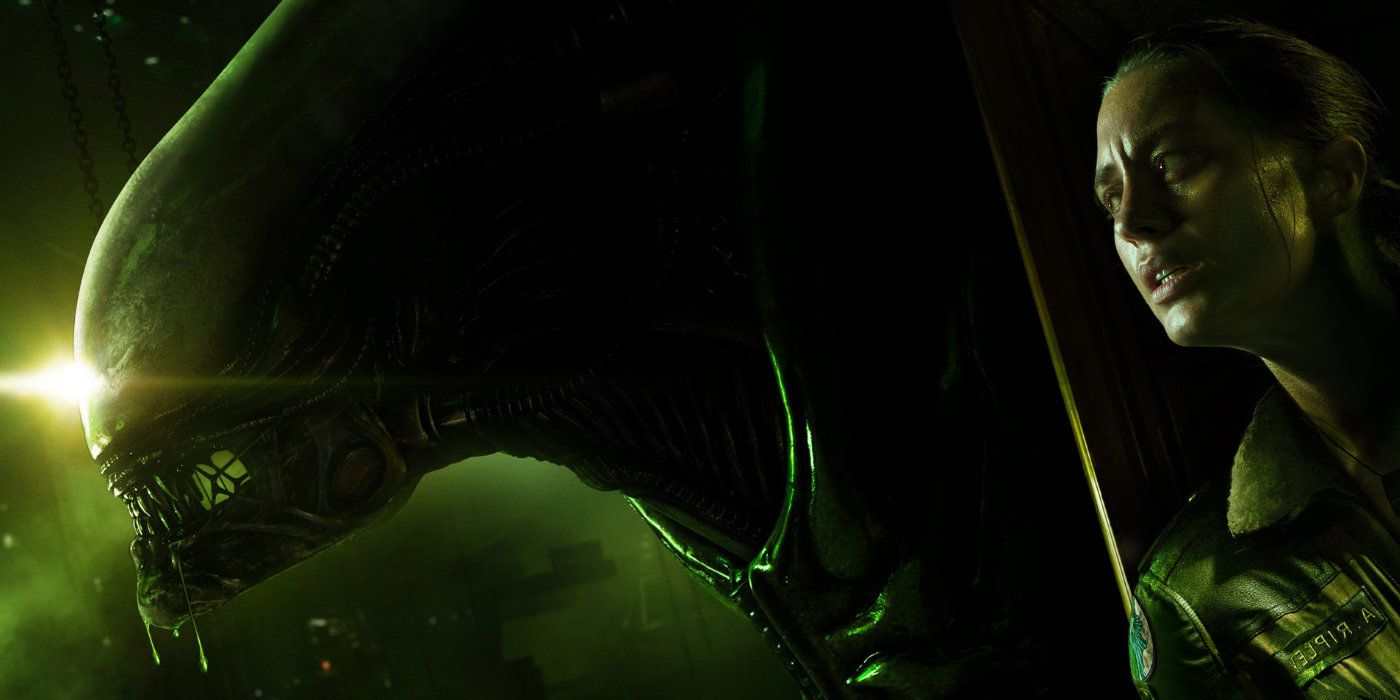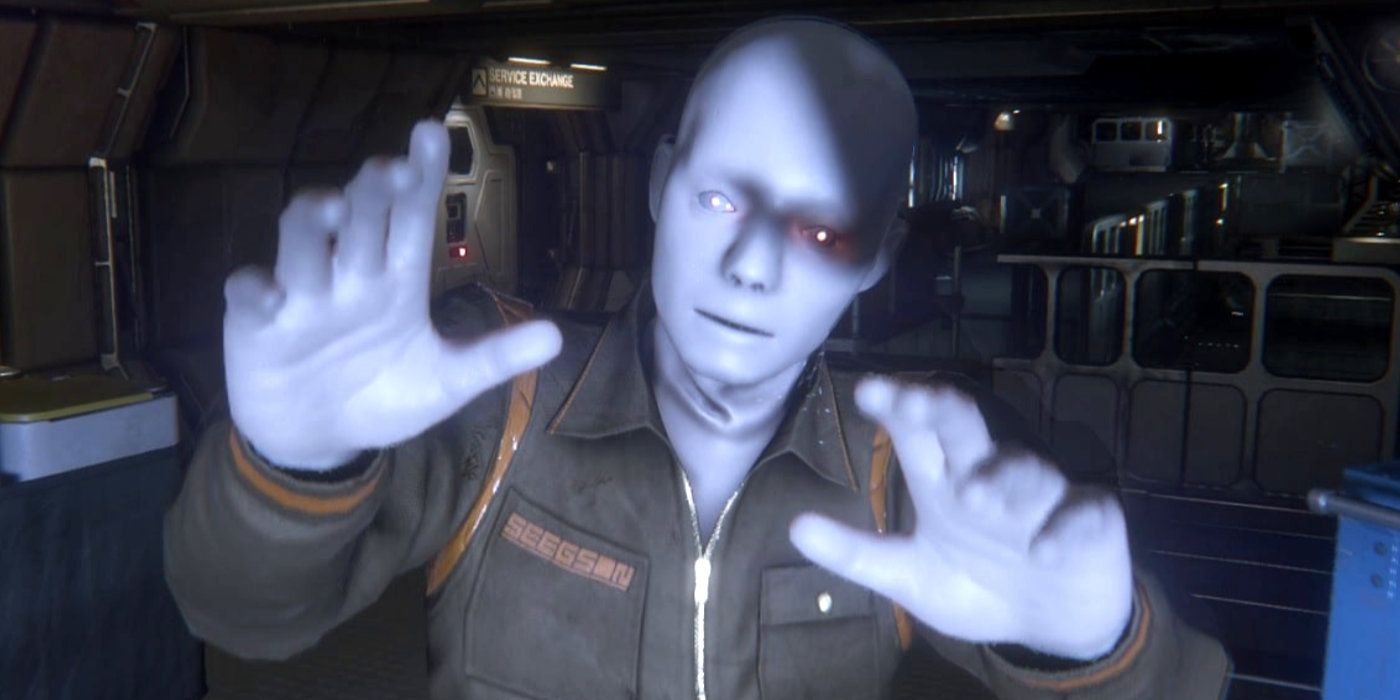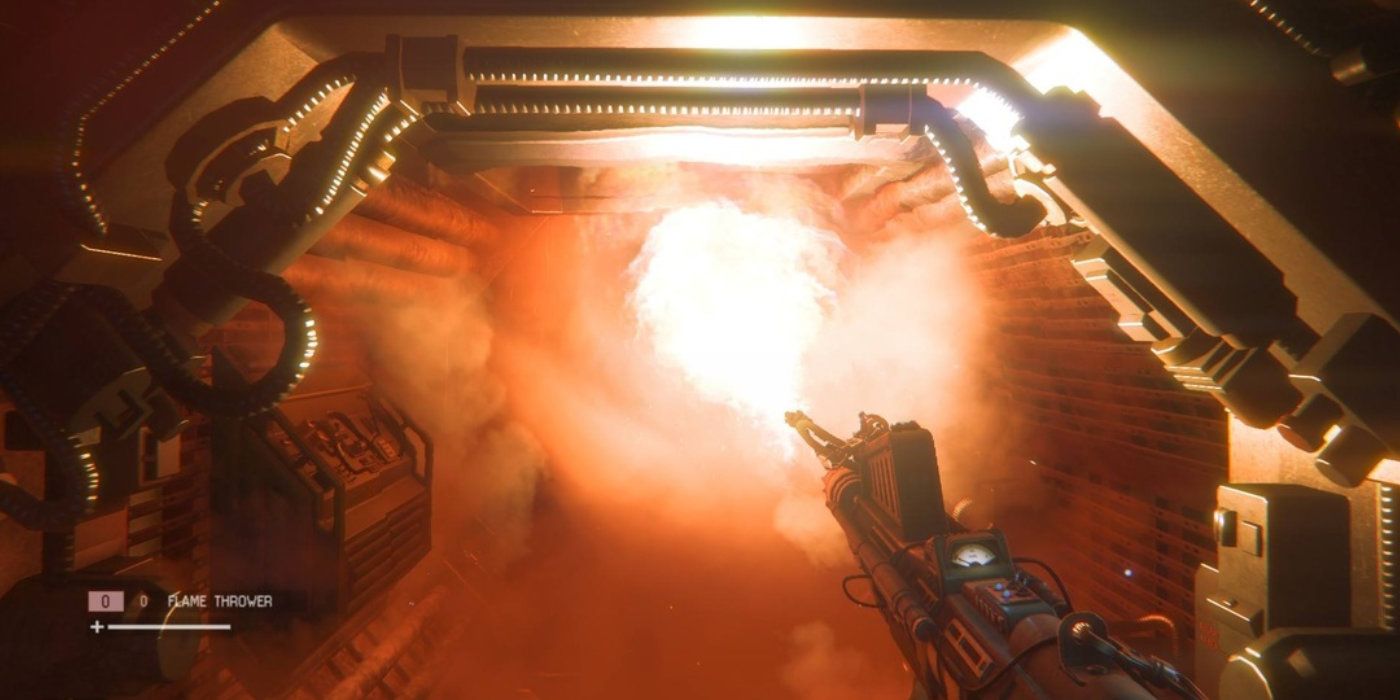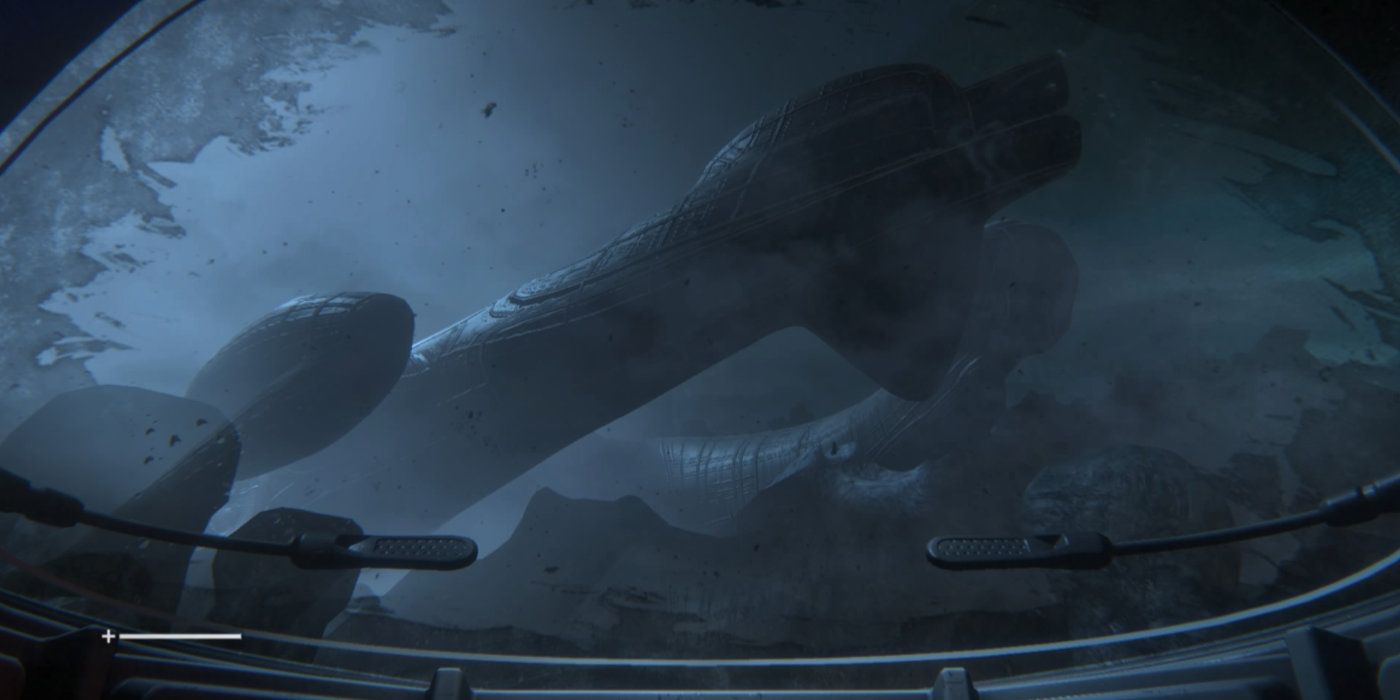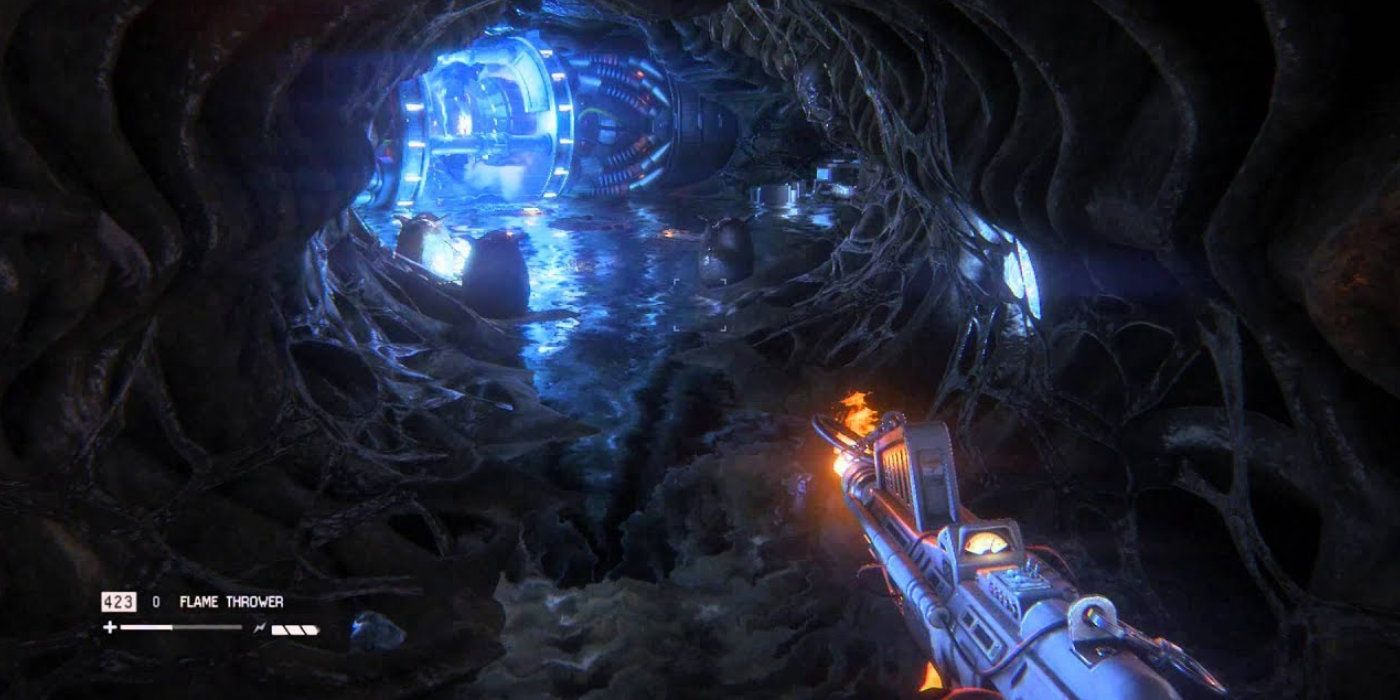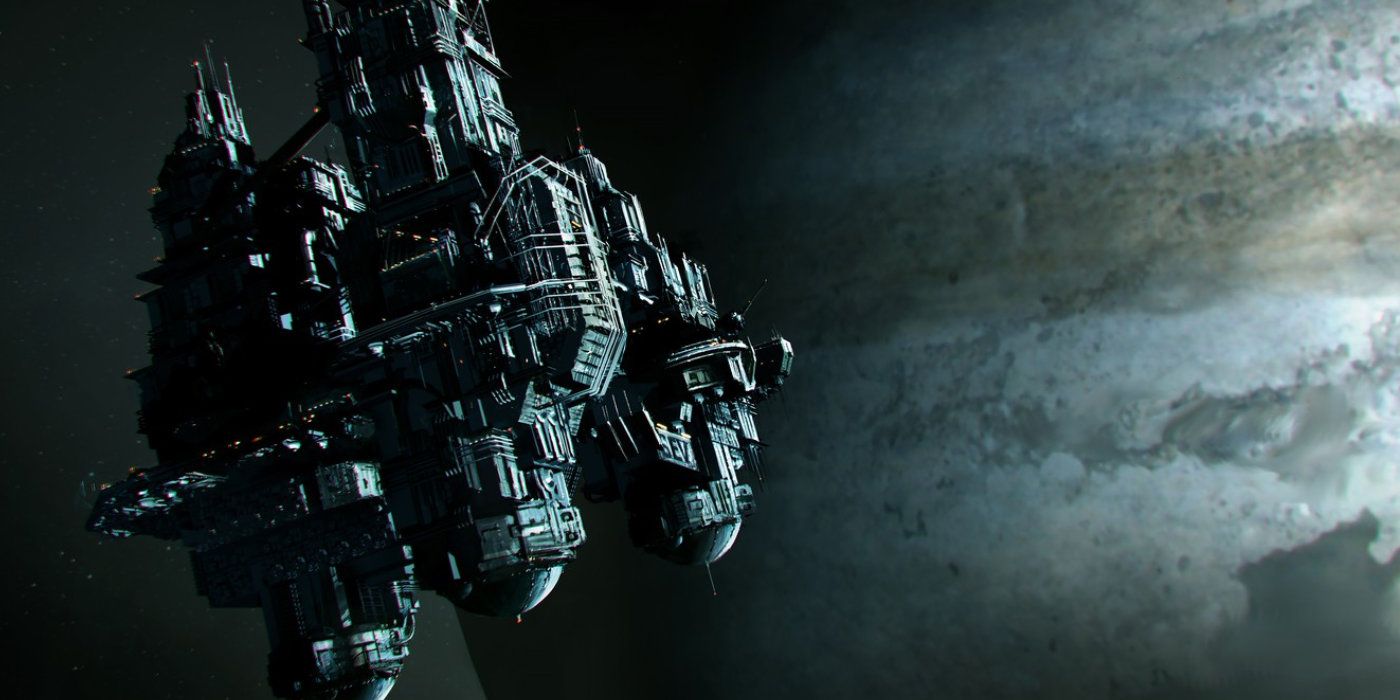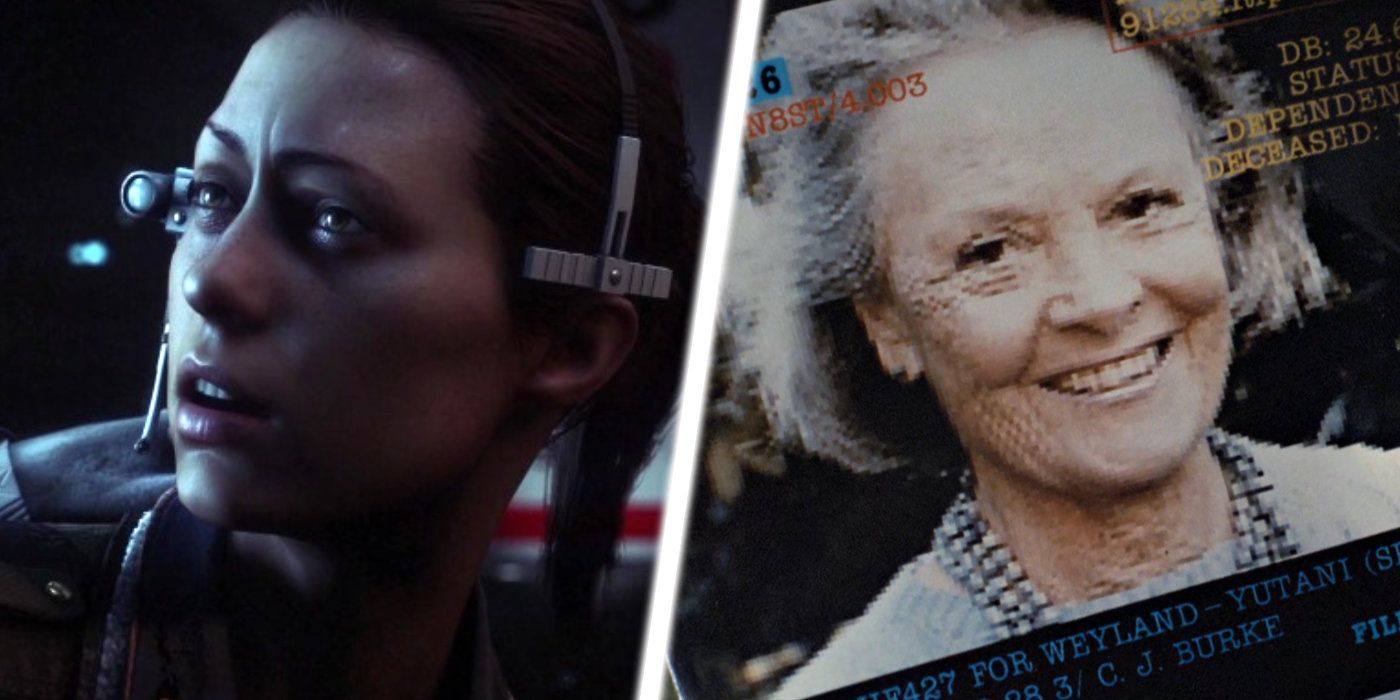In the beginning, there was Alien, the Ridley Scott classic about a group of blue-collar astronauts who stumble upon the galaxy's most lethal extraterrestrial species. After two hours of creepiness, heart-stopping terror, and a triumphant escape, sole survivor Ellen Ripley went into hypersleep and woke up 57 years later, only for the nightmare to continue in James Cameron's follow-up classic Aliens.
For years, fan speculation about what took place during that extremely long multi-decade gap abounded. With so many unanswered questions, the soil was ripe for more stories to be told, and the result was the terrifying video game Alien Isolation. Though not officially canonized, it's the closest thing to a sequel that Alien fans could have hoped for. How does it stack up or fail in that regard?
Succeeds: It Picks Up Where Alien Left Off
Obviously, this is the big one. With little in the way of exposition between the first and second films, there was plenty of room to tell a few new stories. The writers could have taken the easy way out, and tried to tell a story revolving around LV-426 and the derelict ship, but they took a much different approach that ended up paying off handsomely.
Though it doesn't begin directly after the events of Alien, it is wedged somewhat in the middle in terms of the franchise timeline. This is believable because it doesn't rush the story along by immediately grabbing the torch and running with it. By spacing out the events of Alien Isolation in comparison to Alien, the story flows better.
Fails: The Alien Encounters
The highlight of Alien Isolation is undoubtedly the hide and seek formula required to stay alive while the Xenomorph in question stalks the corridors in search of blood. This is one of the most heart-pounding survival horror games ever made, and it obviously helped influence the evolution of the Resident Evil franchise, particularly the seventh chapter.
Yet, there's a lot of missed opportunities to do more with the Xenomorph, particularly when it comes to gameplay. The hiding formula can get stale after a while, and the game would have benefited more by bridging further story elements into the gameplay to keep things fresh.
Succeeds: Amanda Ripley
Alien fans never knew who Amanda Ripley was until they saw the Special Edition of Aliens for the first time. The scene in question takes place at the beginning of the film when Ripley stares at a photo of her daughter Amanda (portrayed by actress Sigourney Weaver's real-life mother), who has since died of old age.
Fans immediately went into a tailspin, wondering who this character was, and how she dealt with "losing" her mother. Alien Isolation puts Amanda Ripley at the forefront of the action by giving her a believable backstory, and the motivation she needs to try and figure out what happened on the Nostromo.
Fails: Amanda Isn't Fully Utilized
While putting Amanda into the game as the primary protagonist was a great idea, it didn't pan out quite as well as it should have. Yes, the Ripley connection did provide a meaningful reason for everything that transpires on Sevastopol, and the emotional connection extends to fans of the franchise who benefited from the link.
That being said, it's easy to forget that Amanda is Ripley's daughter. There isn't enough character growth throughout the game to allow Amanda to stand on her own two feet as a separate protagonist. As such, she feels more like an underutilized stand-in, as opposed to an independent character that can walk her own path.
Succeeds: The Terror
Alien was an exercise in pure, primal fear. Dark, strobe-lit corridors, a terrifying musical score, and unbearable levels of tension gave way to explosions of scares from start to finish, and it still frightens audiences to this day. Alien Isolation analyzed the premise of that film, and built upon it tenfold, with heart-stopping results.
It is, without a doubt, one of the scariest video games ever created. The focus on hiding from and evading an invincible killing machine that stalks the player through every stage is nearly unbearable. The developers relied heavily on the use of proximity sound to keep gamers on edge, and the multiple nods to the creepy 1979 Alien trailer are used to maximum effect.
Fails: Combat
While the alien is undoubtedly the biggest threat on Sevastopol Station, there are a number of other antagonists at play as well. These include creepy homicidal Seegson androids, and criminal factions standing in direct opposition to station security. Once all hell breaks loose, these two entities pose threats to the player.
This is all well and good, but not enough opportunity was taken to integrate them into the story. It would have been nice to see Amanda engage in a detailed interrogation of a disabled android, or have her deal with a life-threatening situation at the hands of the criminal faction leaders. Instead, it's largely a one-woman show with human foes behaving more like pests than characters.
Succeeds: It Patches Up A Major Plot Hole
Aliens made a pretty big mistake by refusing to reference a major plot device of the first film - the warning beacon put into place by the Engineer's derelict ship. This was the catalyst that alerted the Nostromo's onboard computer to pull the crew out of hypersleep, and direct them to investigate the source of the signal on company orders.
The sequel makes no mention of this, which begs the question as to why the colony that was established in the years following the film never stumbled across it. Alien Isolation gives some follow-up exposition as to what exactly happened on LV-426, and it ties in perfectly with the Alien mythos, sealing up one of its biggest and most glaring oversights.
Fails: Plot Holes Of Its Own
While Alien Isolation does manage to neatly tie up a major plot hole in the franchise continuity, it falls victim to a few of its own. The biggest and most obvious occurs later in the game when Amanda discovers a large nest of Xenomorphs and facehuggers within the reactor.
This is where the game falls victim to a continuity issue that both fans and writers have been attempting to square away for decades. According to the development team, a Queen alien was definitely on board Sevastopol, but it was decided that Amanda should not bump into it, in order to avoid a boss fight cliché. While this is all well and good, it doesn't fit very well with the events that take place before, notably the lone Xenomorph running around and slaughtering the crew.
Succeeds: It Expands The Lore
Part of the charm of the first two Alien films was its focus on a "used future" motif originally made famous by films like Star Wars. The "truckers in space" analogy has become synonymous with the franchise, for good reason. Alien Isolation could have focused entirely on this premise, with Weyland-Yutani acting as the main focus.
Instead, the writers chose to expand on established lore by introducing the rival corporation Seegson, a European competitor to Weyland-Yutani which specialized in synthetic androids. Seegson's technology was put on full display on board Sevastopol Station, where much of the game takes place. This is a refreshing addition to an otherwise straightforward sci-fi property.
Fails: Amanda's Connection To Aliens
It's wonderful to see a clever and inventive use of Amanda Ripley as a vehicle for the player to explore what happened in between the first and second films, and it does fit in nicely with established lore. Amanda is an interesting character with a completely justified reason for doing what she does, and the player can feel it.
Unfortunately, no amount of storytelling is going to perfectly square it away with established canon. Amanda lives a full life and dies of old age, which doesn't make a lot of sense. Weyland-Yutani was perfectly willing to silence anyone who knew even a fraction-of-a-fact about the Xenomorph species, yet audiences are supposed to believe she never made a stink about it, or tried to expose the company in any way, after surviving the events of Sevastopol Station.

